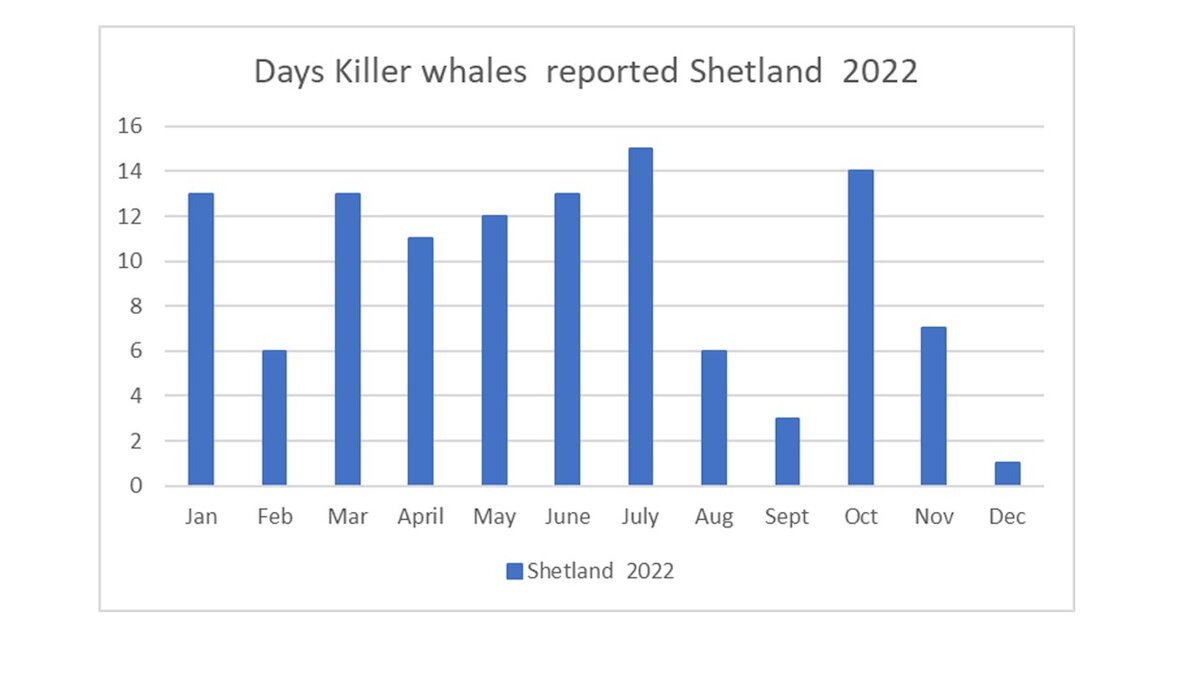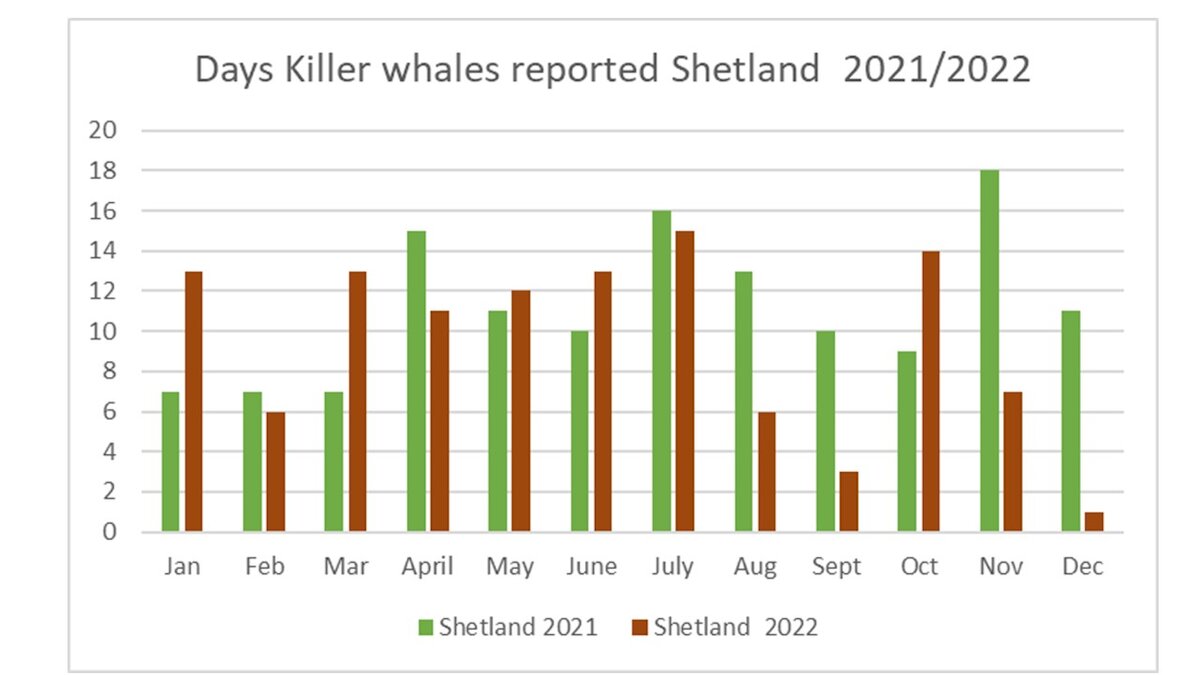When is the best time to see orcas in Shetland?
It’s the kind of question that is frequently asked by those planning a trip to the islands, or by residents who hope to witness an amazing natural spectacle.
The honest answer is that sightings are never guaranteed, but Shetland is one of the best locations for whale watching in the UK. And there is increasing evidence that orcas can be seen at any time of the year.
That claim is based on a database of reported sightings, with information collated from a range of sources including social media groups and other websites.



